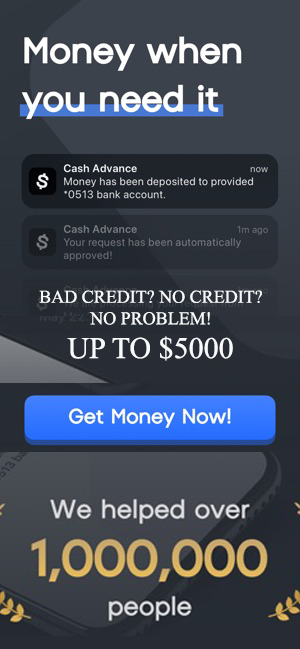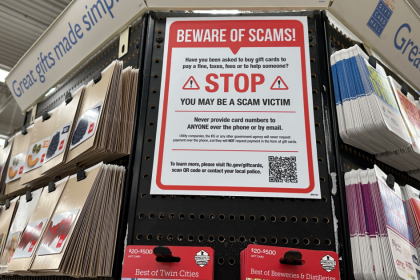If you’re thinking about investing in venture capital or any private fund, you need to understand these five key terms: MOIC, TVPI, DPI, Loss Ratio, and IRR. Without them, it’s like walking into a poker game without knowing the rules. And in this game, the stakes—and potential payouts—are massive.
I’ve been investing in venture capital since 2003, typically allocating about 10% of my investable capital to the space in search of multi-bagger winners. Since I don’t have much of an edge or the time as an angel investor, I’m happy to outsource the work to general partners (GPs) who supposedly do have the edge, for a fee.
My hope is that I’ll pick the right GPs who will spend their careers hunting for winners on behalf of me and other limited partners. If they succeed, everybody wins.
So far, I’ve had decent success. Several funds have returned over 20% annually for 10 years, while others have only produced high single-digit returns. Thankfully, I haven’t invested in a single fund that’s lost me money. The same couldn’t be said if I were investing directly in individual deals, so be careful.
Deciding Whether To Invest In A New Venture Capital Vintage
Right now, I’m debating whether to commit $200,000 to a new closed-end VC fund that focuses on seed and Series A companies. I already committed $200,000 to its prior vintage several years ago, but so far the results have been limited. There’s almost always a loss for the first few years until the potential profits come. This is called the “J-curve.“
At this early stage, investing is a lot like betting on a promising high school player eventually making it to the NBA. Roughly 80% of these companies will go bust. About 10% will become “zombie companies” or only mildly profitable—like players who end up playing overseas. That leaves the final 10% to deliver outsized returns—ideally 30×—to drive the vintage toward a 25% IRR over five years.
Let’s break down the five key metrics using my hypothetical $200,000 investment so you can see exactly how they work.
MOIC — Multiple on Invested Capital
MOIC is simple: it’s everything your investment is worth (both the cash you’ve gotten back and the companies you’re still holding) divided by what you put in.
Example: I invest $200,000. Over time, I get $50,000 in cash distributions and my remaining holdings are valued at $250,000. That’s $300,000 total ÷ $200,000 invested = 1.5× MOIC. Not bad, but not life-changing money.
MOIC says nothing about how long it took to achieve it. That’s why LPs also look at IRR (internal rate of return). A 3X in 10 years is a 11.6% IRR, but a 3X in 5 years is a 25% IRR. A huge difference.
IRR — Internal Rate of Return
IRR is the annualized return you’ve earned on your investment, taking into account both the timing and the size of cash flows in and out. It’s not just about how much you made, but when you made it.
- A 2× MOIC achieved in three years could mean a 26% IRR.
- That same 2× MOIC over ten years is only about a 7% IRR.
For funds, IRR is often the number they brag about because it captures both magnitude and speed of returns — but be careful. IRR can be gamed early on by quick partial returns that make the number look flashy, even if the fund’s later exits are mediocre.
TVPI — Total Value to Paid-In
For most purposes, this is basically the same as MOIC. It’s just the VC way of sounding fancier. Formula: (Residual Value + Distributions) ÷ Paid-In Capital. So same math, same result — 1.5× in our example.
DPI — Distributions to Paid-In
DPI is the “cash-on-cash” number. How much have you actually gotten back in real, spendable money? In our case: $50,000 ÷ $200,000 = 0.25× DPI. Paper gains don’t pay the bills, and DPI is your reality check.
Loss Ratio
This one’s a gut punch: the percentage of your invested capital that’s gone to zero. If $40,000 of my $200,000 is in failed startups, that’s a 20% loss ratio.
Pulling All The Venture Capital Investment Definitions Together
Seven years in, our $200,000 might look like this:
- Distributions: $50,000
- Unrealized value: $250,000
- Losses: $40,000
- MOIC/TVPI = 1.5× ($300,000 / $200,000)
- DPI = 0.25× ($50,000 / $200,000)
- Loss Ratio = 20% ($40,000 / $200,000)
Best-Case Scenario (5× MOIC)
Top tier venture capital firms return a 5X MOIC over a 10-year period. Let’s take a look at what that could look like.
- $500,000 in distributions + $500,000 in unrealized value for a total of $1,000,000
- DPI = 2.5× ($500,000 / $200,000)
- Loss Ratio = 10% ($10,000 / $200,000)
- IRR = 26.23% over 10 years
A 26.23% internal rate of return (IRR)—the annualized rate at which an investment grows over time—over 10 years is phenomenal, about 16% higher than the S&P 500’s average annual return. Just as good is that the venture capital limited partner stayed invested for the full decade, partly because they had to. With public equities, it’s far easier to panic sell or lock in profits early, which can derail long-term compounding.
Realistic Worst-Case Scenario (0.7× MOIC)
Bottom tier venture capital firms return a 1X MOIC or less. Here’s what a 0.7X MOIC could look like on a $200,000 investment.
- $50,000 in distributions + $90,000 in unrealized value ($140,000 / $200,000)
- DPI = 0.25× ($50,000 / $200,000)
- Loss Ratio = 40% ($80,000 / $200,000)
- IRR = –4.24% over 10 years
So even though the bad fund “only” loses ~30% of its value on paper, the time factor drags the annualized return deep into negative territory. If the S&P 500 returned 10% a year over the same 10-year period, you’d have $519,000 versus just $140,000. That’s a massive gap, which is why choosing the right venture capital funds is critical.
Betting on a brand-new VC is risky due to the lack of a track record. To offset this, the general partner needs to either lower their fees and carry, or seed the portfolio with some early winners to reduce the J-curve period of losses and improve the odds of achieving a strong MOIC and IRR.
Venture Capital Is A Hit-Driven Business
The reality is most investments fail, a few go sideways, and one or two home runs make the fund. A high MOIC with a low DPI means you’re looking at “paper riches.” A high loss ratio tells you the manager is swinging for the fences, but missing often. Make sure the ratios align with what you want.
Before writing a check, always:
- Check the track record — across multiple funds and vintages (years), not just the shiny last one.
- Ask about the loss ratio — you’ll quickly see if they’re disciplined or gamblers.
- Find out the time to liquidity — because a 5× MOIC in year 15 is a lot less exciting than it sounds.
- Be honest about your own risk tolerance — could you watch 90% of your portfolio companies fail without losing sleep?
Knowing MOIC, TVPI, DPI, Loss Ratio, and IRR won’t magically make you pick the next Sequoia Capital. But it will stop you from investing blind. And in venture capital, avoiding big mistakes is important. You don’t want to lock up your capital for 10-plus years only to significantly underperform. The opportunity cost may be too great to bear.
Alternative Choice: Open-Ended Venture Capital Funds
If you want exposure to venture capital without the painful drawbacks, open-ended VC funds are worth a hard look. These vehicles don’t just offer liquidity, they also let you see the portfolio before you invest. That’s kind of like sitting down at a Texas Hold’em table already knowing your opponents’ cards and seeing the flop before it’s revealed.
With that kind of visibility, you can decide whether the companies are thriving or floundering and place your bets with a genuine edge. Sure, the turn and river can still bring surprises, but at least investing isn’t a total leap of faith like the way you are with traditional closed-end funds. Over time, that knowledge advantage may add up.
Your Age Matters When You Invest In Venture
The older I get, there risk there is in locking up money for a decade with less visibility and liquidity. With closed-end VC funds, you usually don’t know how things are going until year three, at the earliest.
10 years is a long time to wait for returns and capital back. At 48, I can’t guarantee I’ll even be alive at 58 to enjoy the gains. If an emergency arises, I also want the option of tapping some liquidity, which traditional funds simply don’t allow. That’s why you should only invest in them with money you’re 100% sure you won’t need for a decade.
Then there’s the 20%–35% carry fee. I get it. General partners earn their keep by finding high-return companies. As an economist, I should accept paying if I’m still making money. But if there’s an alternative way to invest in private companies without coughing up that hefty slice of profits, why wouldn’t I take it? This is where platforms like Fundrise Venture shine.
Personally, I’m diversified across early-, mid-, and late-stage VC, but my sweet spot is Series A, B, and C. These companies usually have real traction, recurring revenue, and product-market fit. Instead of praying for a 100X moonshot from a seed-stage gamble, I’ll happily take “consistent” 10–20X winners. At this stage in my life, probability and visibility matter far more than chasing lottery tickets.
Flexibility And Visibility Are Attractive Attributes To Investing
Open-ended VC funds give you something rare in private investing: flexibility and clarity. They reduce lock-up risk, eliminate hefty carry fees in some cases, and give you visibility into what you’re actually buying. You can skip the J-curve with an open-ended VC fund.
For younger investors with decades to wait, traditional closed-end funds makes more sense. The capital calls over a three-to-five-year period are great for consistent investing. But for those of us who or older and value optionality, open-ended funds feel like the more pragmatic choice.
So there you have it. Now you know the main venture capital investment terms and options to help you better allocate your capital. Remember to stay disciplined as you build more wealth for financial freedom.
Readers, are you a venture capital investor? If so, what percentage of your investable capital do you allocate to the asset class? With growth companies staying private for longer, why don’t more investors put more capital into private markets to capture that upside?
Subscribe To Financial Samurai
Listen and subscribe to The Financial Samurai podcast on Apple or Spotify. I interview experts in their respective fields and discuss some of the most interesting topics on this site. Your shares, ratings, and reviews are appreciated.
To expedite your journey to financial freedom, join over 60,000 others and subscribe to the free Financial Samurai newsletter. You can also get my posts in your e-mail inbox as soon as they come out by signing up here. Financial Samurai is among the largest independently-owned personal finance websites, established in 2009. Everything is written based on firsthand experience and expertise.
Read the full article here
















